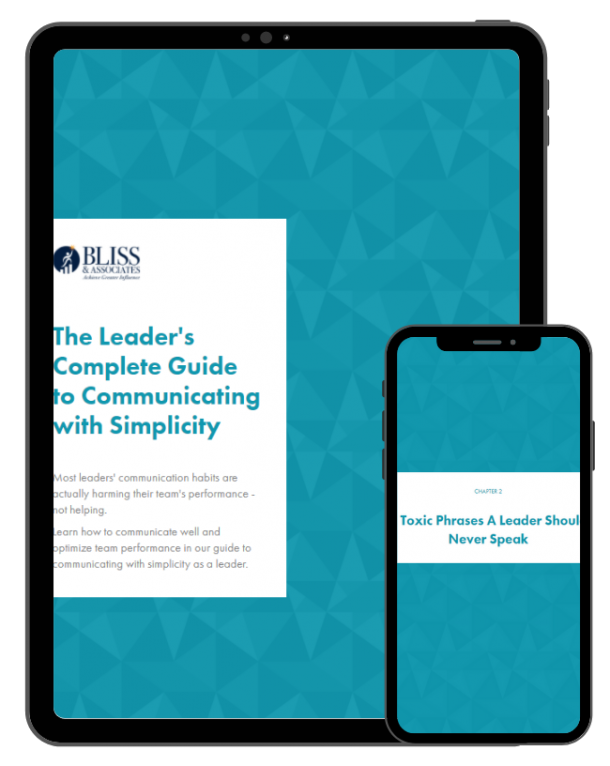
Have you ever botched a communication situation with your team? Of course you have…we all have; some of us have a lot of experience with this!
I’d bet, however, you didn’t intend to make the mistake when you set out, did you? What can you do to prevent similar mistakes from happening in the future?
The answer is to become more aware of potential mistakes that can impede your communications.
To further explore this topic, I turned to a communication expert – a friend of mine, Alison Davis, who for over 15 years has run a highly successful communication consulting firm in New Jersey and works with clients all around the country. Alison has written a piece that I have picked over for your benefit – and added a comment or two of my own.
Most of us began as a manager or individual contributor before becoming a leader. Things change when the switch to a leader is made. I’ve previously shared a nugget of wisdom from Peter Drucker, who noted that “leaders ensure the right things are done and managers ensure things are done right”.
So leaders have to make sure the right message is shared in the proper manner. Leaders must articulate where the organization is going, clarify what employees and team members need to do to help the organization get there (i.e., be successful), and share progress along the way.
Davis writes, “The good news is that when you fulfill your communication role, employees become motivated to do their best work. Employees want to connect with their senior leaders and feel engaged in the company’s strategic direction. Hearing from the boss is a key driver of satisfaction.”
But leaders often lack the clarity, time and, skills they need to communicate effectively. As a result, they make these 5 communication mistakes:
- Disappear – as leaders, we can spend the entire day, most days, in a great variety of meetings, so naturally you think you are communicating. However, if you check into this you’ll realize you are communicating to only a small percentage of the overall employee base. Davis advises that you need a communication plan designed to provide maximum visibility. This can happen with town hall meetings, briefings with managers who are several levels below you, and breakfasts or coffee sessions with smaller groups of employees, on a regular basis. The purpose is to share information AND to listen to what managers and employees have to say.
- Using “CEO Speak” – typically, employees don’t see the strategic issues, challenges and opportunities you see. Rather, they see issues affecting their daily life on the front line. So, you must make your messages simple, relatable and clearly understandable. Seek some help from some trusted colleagues or staff members to help you formulate your messages in ways the employees will catch on to and grasp at their level.
- Wrong Timing – timing is one of the leader’s biggest challenges in communication. If you wait too long to share information, you run the risk that your audience already know what you’re now revealing. This impacts your credibility greatly! On the other hand, communicating too soon can be a problem, particularly if all the information relevant to the audience is not fully baked yet. Imagine the scenario of knowing a significant reorganization must take place. You announce your intention to do so, yet don’t announce the plan or the guidelines you will follow. In the absence of information, people will create it – you can count on that. You can also count on the fact the information they create will not be accurate. Then you have a larger problem on your hands. So, focus and time your communication to meet employees’ need to know and not your need to tell!
- Do all the talking – many leaders associate communicating with sharing information. As a result, they plan town hall meetings with 50 minutes of presentation and 10 minutes of Q&A. This approach is unbalanced and won’t accomplish your objective of really connecting with the employees. Employees want to be engaged and heard. Davis suggests that, instead of asking “do you have any questions?” you change the question to, “Based on what I’ve just told you, what will be the hardest aspects to accomplish?” This approach creates two way communication in a way that makes people feel more comfortable about participating.
- Mismanage employee questions – many leaders are driven, Type A personalities who don’t excel in the area of patience! This same attribute, while definitely contributing to your success as a leader, can also trip you up when employees ask questions. You can receive all forms of questions – those who get right to the point, and those that seem to drone on and on with useless content before they ever get to the question. When you respond, either in body language and/or actual words indicating your level of impatience, you will lose respect of the employees. Instead, be aware of your patience level. If you are asked a question you don’t know the answer to, be okay with saying you don’t know, yet assure them you will find out the answer by such and such a date and get back to them. How well you answer the question can be the difference between encouraging and shutting them down.
One final tip – confident and highly successful leaders ask others they trust to give them open and honest feedback on their performance as a communicator. I’d encourage you to have a practice of conducting a debrief session with those trusted advisors who will honestly tell you the good, the bad and the ugly. Then, you will be demonstrating the importance of continuous improvement, in communication and most importantly, leadership.
Thanks to my friend Alison! If you would like to connect with her, let me know.
Best regards,
Bill

